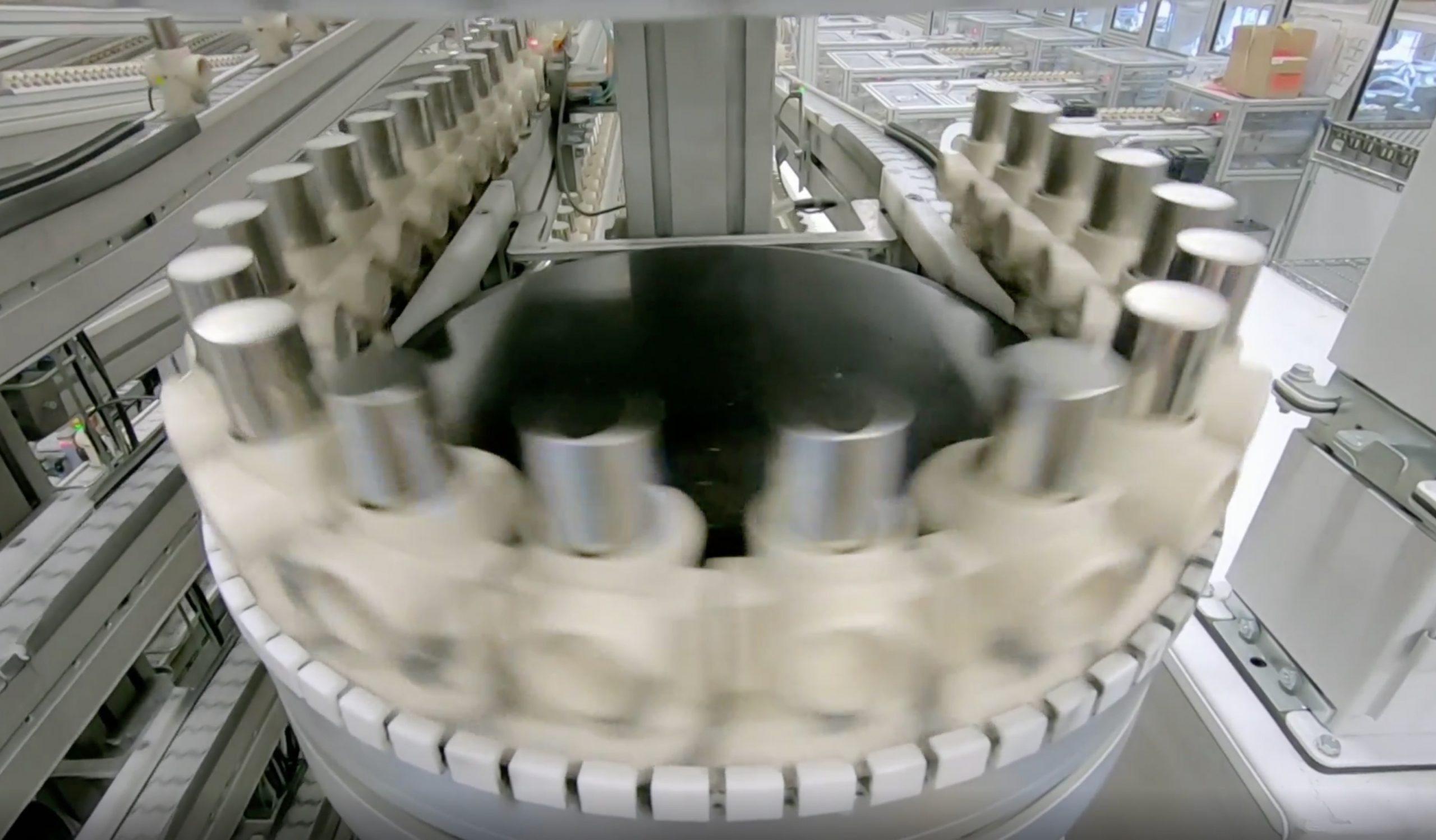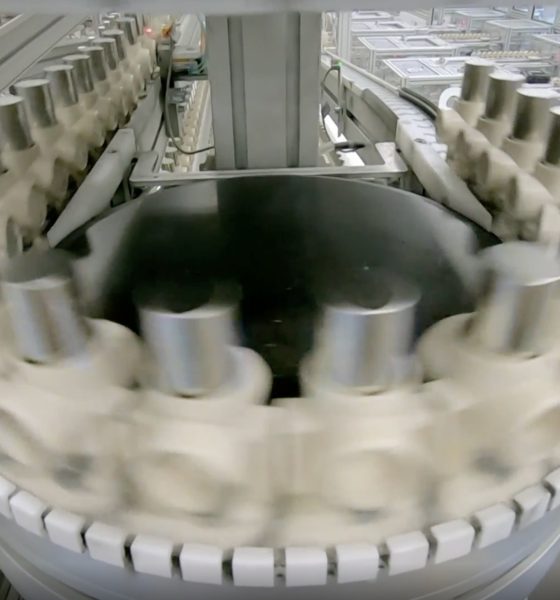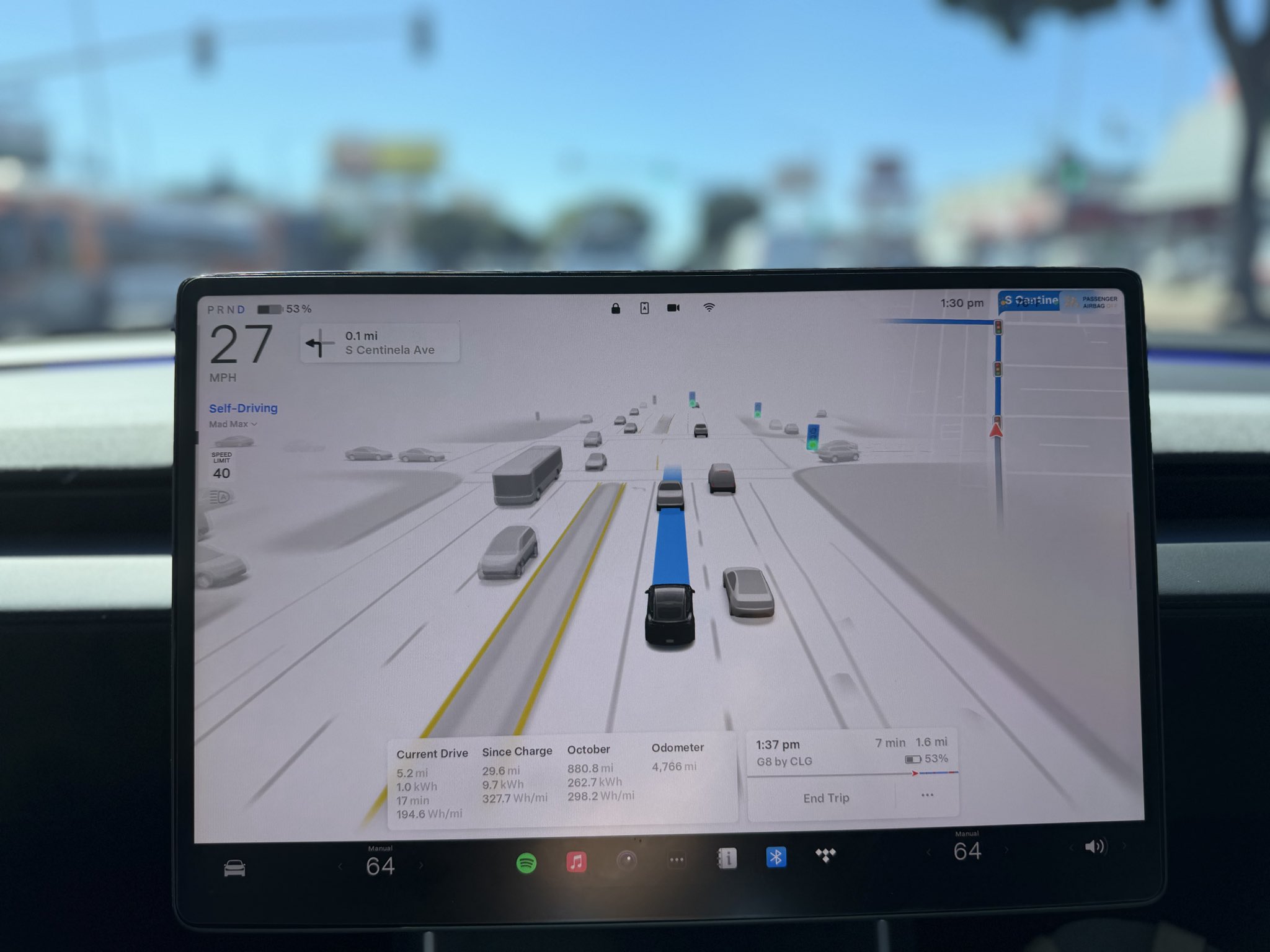

News
Tesla’s battery team is on the verge of a new cell with revolutionary density
Tesla’s battery research team in Canada, led by Jeff Dahn, is on the verge of proving revolutionary battery density through a new, next-gen battery cell. The team released its findings in a new paper, which shows how to combat anode-free cell failure through electrolyte solutions.
The paper is titled “Diagnosing and correcting anode-free cell failure via electrolyte and morphological analysis.” Dahn and his team of researchers at Dalhousie University show that some of the anode-free battery cells that are used tend to store more energy per volume than traditional lithium-ion cells. This is crucial in increasing the range availability of electric cars.
The anode-free batteries also are lighter than traditional cells, according to Hansen Wang, a battery researcher at Stanford University.
“The idea is to only use lithium on the cathode side to reduce weight,” Wang said in an interview with the prestigious school in Northern California.
However, with the increased energy storage capacity, some downsides become present. One fallback is the cells “tend to experience rapid capacity loss and short cycle life,” the paper’s abstract says on Nature. There are also safety issues with anode-free cells that pertain to the metallic lithium that is present within.
Dahn and his team stated that the anode-free cells are capable of an extended lifespan when a dual-salt carbonate electrolyte solution is used to combat the effects of degradation.
The team states:
“Recently, we demonstrated long-lifetime anode-free cells using a dual-salt carbonate electrolyte. Here we characterize the degradation of anode-free cells with this lean (2.6 g Ah−1) liquid electrolyte. We observe deterioration of the pristine lithium morphology using scanning electron microscopy and X-ray tomography, and diagnose the cause as electrolyte degradation and depletion using nuclear magnetic resonance spectroscopy and ultrasonic transmission mapping. For the safety characterization tests, we measure the cell temperature during nail penetration.”
When Dahn’s team utilized the dual-salt carbonate electrolyte solution in battery cells, it showed that an inactive mix of dead lithium forms large lithium columns in the cell. This creates an exemplary lithium morphology within the cell, which could solve the issues with a short lifespan.
In the past, Tesla patented an electrolyte solution that could be added to lithium-ion batteries to extend a cell’s lifespan.
The optimized electrolyte successfully extended the lifetime of anode-free cells to 200 total cycles, which is a significant improvement from other findings. For example, the previously mentioned experiment at Stanford University was performed in June 2020. This experiment showed that anode-free battery cells ran 100 cycles before the capacity dropped to 80 percent.
The improvements in battery cell lifespan will eventually lead to longer-lasting cells in electric vehicles. Tesla has been working toward a million-mile capable battery cell for an extended period, which could be unveiled at the company’s Battery Day event on September 22.
Energy density is ultimately the key to more extended range, but there is a fine line between jeopardizing lifespan for more miles per charge. Ultimately, the research with Dahn’s team will continue, and it is a significant advancement in terms of what past research has shown.
The “Diagnosing and correcting anode-free cell failure via electrolyte and morphological analysis” paper is available here.

News
Czech Deputy excited for Tesla FSD, hints at Transport Committee review
The ANO party lawmaker shared his thoughts about FSD in a post on social media platform X.

Martin Kolovratník, a Czech Republic Chamber of Deputies member, has expressed his excitement for Tesla’s Full Self-Driving (FSD) after an apparent constituent called for a quick approval for the advanced safety system.
The ANO party lawmaker, who drives both diesel and EV, shared his thoughts about the matter in a post on social media platform X.
The official’s initial statements
Kolovratník kicked off the exchange with a post outlining his coalition’s efforts to scrap highway toll exemptions for electric vehicles and plug-ins starting in 2027.
“Times have changed. Electric vehicles are no longer a fringe technology, but a full-fledged part of operations. And if someone uses the highway network, they should follow the same rules as everyone else. That’s the basis of fairness,” he wrote.
He emphasized equity over ideology, noting his personal mix of diesel and electric driving. “For this reason, there is no reason to continue favoring one technology at the expense of another… It’s not about ideology, it’s about equal conditions. That’s why we clearly agreed within the new coalition: the exemption for electric vehicles and plug-ins will end in 2027. The decision is predictable, understandable, and economically sound.”
Tesla FSD enthusiasm
The conversation pivoted to Tesla’s FSD when X user @robotinreallife, who seems to be one of the official’s constituents, replied that other matters are more important than ending highway exemptions for EVs.
“I’m happy to pay for the highway, but I have a question about a much more fundamental matter: The Netherlands will approve the operation of Tesla FSD in February 26, a technology that has been proven to reduce accidents. The Czech Republic has the option to immediately recognize this certification. Do you plan to support this step so that we don’t unnecessarily delay?” the X user asked.
Kolovratník responded promptly, sharing his own excitement for the upcoming rollout of FSD. “I know about it. I like it and it seems interesting to me. Once we set up the committees and subcommittees, we’ll open it right away in that transport one. Thanks for the tip, I’ll deliver the report,” the official noted in his reply on X.
Kolovratník’s nod to FSD hints at the system’s potentially smooth rollout to Czechia in the coming year. With the Netherlands possibly greenlighting FSD (Supervised) in early 2026, Kolovratník’s commitment could accelerate cross-border certification, boosting FSD’s foray into Europe by a notable margin.
News
Tesla Model 3 named New Zealand’s best passenger car of 2025
Tesla flipped the switch on Full Self-Driving (Supervised) in September, turning every Model 3 and Model Y into New Zealand’s most advanced production car overnight.

The refreshed Tesla Model 3 has won the DRIVEN Car Guide AA Insurance NZ Car of the Year 2025 award in the Passenger Car category, beating all traditional and electric rivals.
Judges praised the all-electric sedan’s driving dynamics, value-packed EV tech, and the game-changing addition of Full Self-Driving (Supervised) that went live in New Zealand this September.
Why the Model 3 clinched the crown
DRIVEN admitted they were late to the “Highland” party because the updated sedan arrived in New Zealand as a 2024 model, just before the new Model Y stole the headlines. Yet two things forced a re-evaluation this year.
First, experiencing the new Model Y reminded testers how many big upgrades originated in the Model 3, such as the smoother ride, quieter cabin, ventilated seats, rear touchscreen, and stalk-less minimalist interior. Second, and far more importantly, Tesla flipped the switch on Full Self-Driving (Supervised) in September, turning every Model 3 and Model Y into New Zealand’s most advanced production car overnight.
FSD changes everything for Kiwi buyers
The publication called the entry-level rear-wheel-drive version “good to drive and represents a lot of EV technology for the money,” but highlighted that FSD elevates it into another league. “Make no mistake, despite the ‘Supervised’ bit in the name that requires you to remain ready to take control, it’s autonomous and very capable in some surprisingly tricky scenarios,” the review stated.
At NZ$11,400, FSD is far from cheap, but Tesla also offers FSD (Supervised) on a $159 monthly subscription, making the tech accessible without the full upfront investment. That’s a game-changer, as it allows users to access the company’s most advanced system without forking over a huge amount of money.
News
Tesla starts rolling out FSD V14.2.1 to AI4 vehicles including Cybertruck
FSD V14.2.1 was released just about a week after the initial FSD V14.2 update was rolled out.

It appears that the Tesla AI team burned the midnight oil, allowing them to release FSD V14.2.1 on Thanksgiving. The update has been reported by Tesla owners with AI4 vehicles, as well as Cybertruck owners.
For the Tesla AI team, at least, it appears that work really does not stop.
FSD V14.2.1
Initial posts about FSD V14.2.1 were shared by Tesla owners on social media platform X. As per the Tesla owners, V14.2.1 appears to be a point update that’s designed to polish the features and capacities that have been available in FSD V14. A look at the release notes for FSD V14.2.1, however, shows that an extra line has been added.
“Camera visibility can lead to increased attention monitoring sensitivity.”
Whether this could lead to more drivers being alerted to pay attention to the roads more remains to be seen. This would likely become evident as soon as the first batch of videos from Tesla owners who received V14.21 start sharing their first drive impressions of the update. Despite the update being released on Thanksgiving, it would not be surprising if first impressions videos of FSD V14.2.1 are shared today, just the same.
Rapid FSD releases
What is rather interesting and impressive is the fact that FSD V14.2.1 was released just about a week after the initial FSD V14.2 update was rolled out. This bodes well for Tesla’s FSD users, especially since CEO Elon Musk has stated in the past that the V14.2 series will be for “widespread use.”
FSD V14 has so far received numerous positive reviews from Tesla owners, with numerous drivers noting that the system now drives better than most human drivers because it is cautious, confident, and considerate at the same time. The only question now, really, is if the V14.2 series does make it to the company’s wide FSD fleet, which is still populated by numerous HW3 vehicles.









